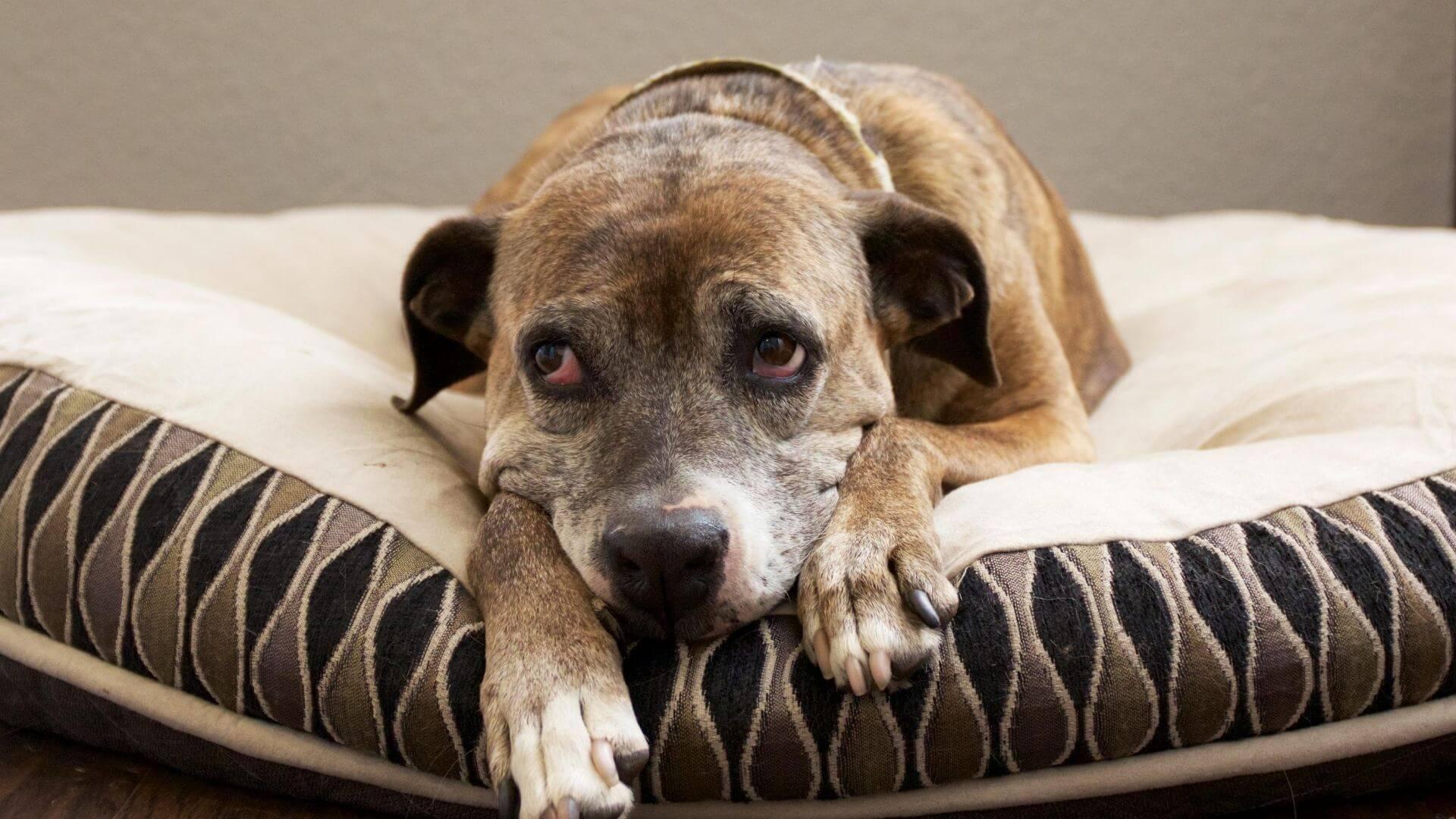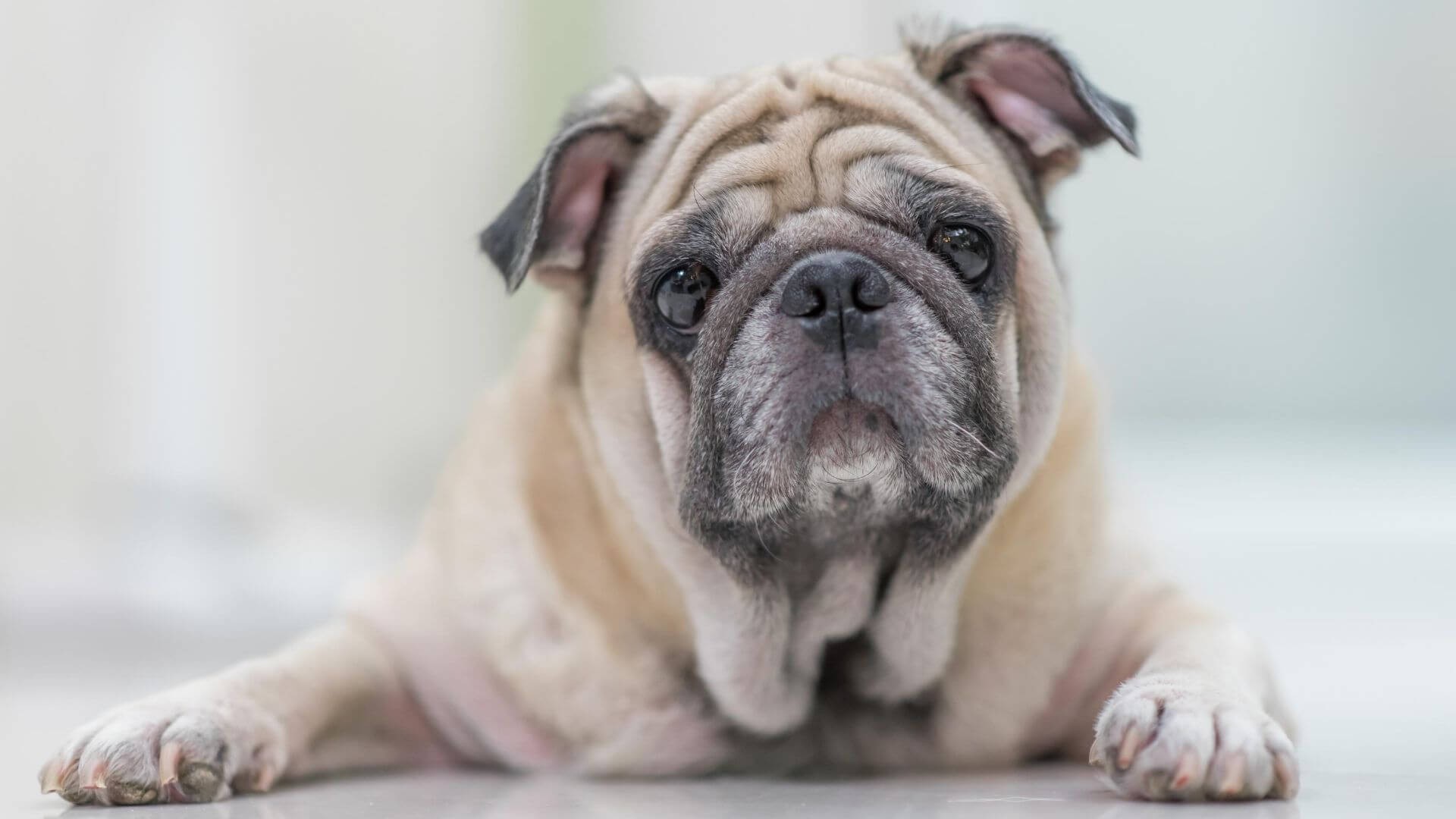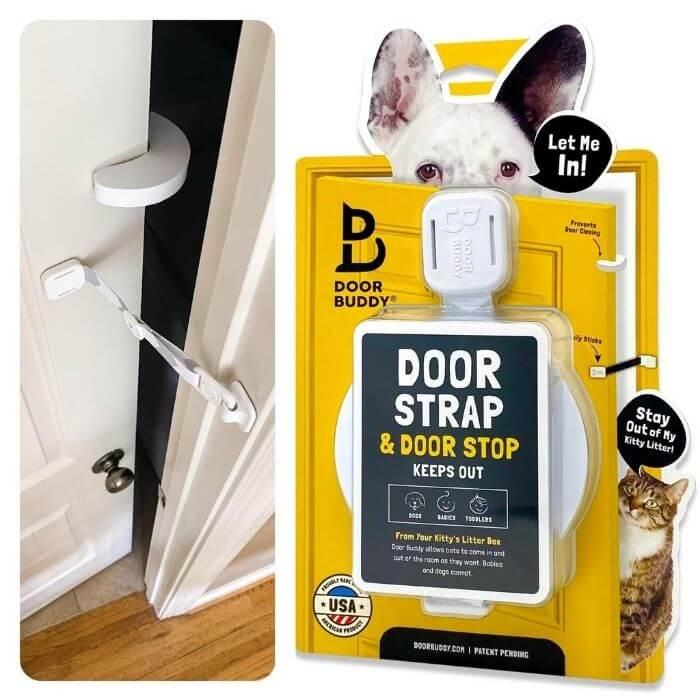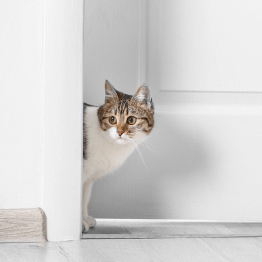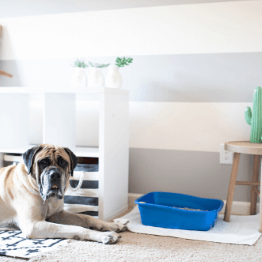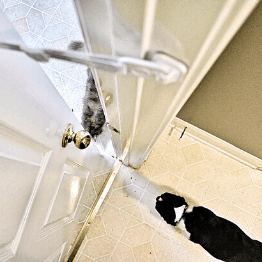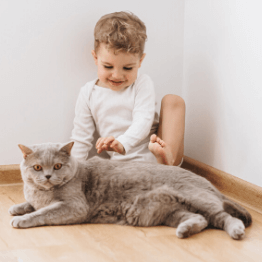HOW TO POTTY TRAIN AN OLDER DOG
There’s no greater love than the love of an older dog. That is until you realize that they’re not correctly potty trained! Dog potty training is never fun.
Older dog potty training, on the other hand, well, let’s just be honest and say it’s still no fun! However, that doesn’t mean you can’t teach your old dog new tricks.
Learning how to potty train an older dog will come in handy if you’re bringing a new doggo home or if someone needs a little re-training. After all, even the best of us need some retouching now and then!
Keep your home accident-free with our older dog potty training guide. Here you will find an outline of some of the difficulties you may face and how you can get your dog potty training under wraps.
WHY POTTY TRAINING AN OLDER DOG CAN BE MORE DIFFICULT:
One of the most significant benefits/expectations that we have when adopting an older dog is that they’re potty trained. Un-fur-tunately, this isn’t always the case.
Now, this may break your heart a little, but not all shelter dogs were given the life they deserved. Some doggos just simply weren’t given the time of day to go through the basics, such as learning where to go to the bathroom.
Although your grey-haired pooch may be ready to adore you with their slobbery kisses, potty training an older dog can come with a few hassles. Scents and odors from your other pets may stimulate their need for urine marking, and they may need to unlearn some bad habits if they were previously housetrained.
Those bathroom cues may be different from what you’re trying to get across. Your doggo may be requesting to go out, but you simply don’t see it. Miscommunication strikes again! Our potty training tips for older dogs will help fix this.
For dogs that need a recap on your home’s bathroom rules, you may find that their new accident-prone ways have been brought on by a few behavioral changes. Bringing in new pets, moving houses, or introducing a baby to your home can shift your dog’s ways.
Then there are always other issues to consider. Dogs who frequently urinate inside, or fail to make it to their bathroom spot, could be facing some medical problems. They could also be feeling a little anxious or overly excited. Either way, if you’re concerned, you can try consulting your vet or behavior specialist.
Whatever the case may be, never fear! We’ve put together our best tips for how to potty train an older dog.
OLDER DOG POTTY TRAINING: THE HOW-TO GUIDE
Here’s the good news, dog potty training shouldn’t take up too much of your time, especially with our potty training tips for older dogs. The key to success is to remember to stay calm, be consistent, and keep patient. Without further ado, let’s get to it!
Establish a Routine
Dogs thrive off of routine! If they know when and where their meals come from, when it’s time to go outside, and when they can act a fool, you will see a huge difference in their stature.
When beginning your dog potty training, try to incorporate the same steps each time your dog goes to the bathroom. For example, take them out at the same time every morning to the same spot and say the same praise. In the mornings, this will be when you wake up. You can follow this up with feeding them breakfast so that your routine carries on throughout the day.
By laying down cues and rhythms, your dog will soon become fur-miliar with their expectations. In no time, they will know that when they wake up in the morning, it’s time to go outside and do their business. The same can go for your nighttime routine. Before calling it a day, make sure to let your dog out and take them to the same spot with the repeated praise.
Keep a Watchful Eye
The best way to avoid any accidents is to eliminate the chances of it happening in the first place. Your dog should be watched wherever possible and kept out of rooms where he can get into trouble.
You may also want to take note of any signs and signals that it’s time to go. Sniffing or circling are generally the first signs that something’s about to go down. If you spot this happening, off to their bathroom spot and follow it up with their praise.
Of course, there are times where we can’t be there. When this happens, pet-proofing is a must. Using a door latch like Door Buddy will keep your dog out of rooms where you seriously don’t want any wees or poos reaching. AKA, it’s a lifesaver for carpets and rugs!
Use a Crate
If pet-proofing doesn’t do the trick, you can look at crate training your dog. This will keep your dog safe and sound from getting themselves into trouble. However, it’s super important to remember to let them out and allow them to stretch their legs. Being stuck in a small space isn’t ideal, but sometimes it’s necessary.
Reward Often
Probably the biggest trick up your older dog potty training sleeve is knowing how to reward your pooch. Rewarding good behavior will back-up positive actions and help teach your dog to understand the value behind their actions.
Remember Accidents Happen
Oops! Look, we’re not going to lie and say that your older dog potty training issues will disappear overnight - but, wouldn’t that be great? Accidents will happen. Yes, you will feel frustrated. No, you shouldn’t give up!
Patience is vital in understanding how to potty train an older dog. After all, our dogs are always so patient with us, and it’s time we return the favor. If your dog makes a piddle where they shouldn’t, please don’t punish them. Despite popular belief, dogs don’t respond well to negative responses. Instead, go back to your routine and make sure to cement those cues.
Well, there you have it, our top potty training tips for older dogs! Potty training an older dog doesn’t have to be as much of a headache as it may seem to be. As long as you keep calm and patient, you and your pooch should soon be saying farewell to any bathroom problems!

